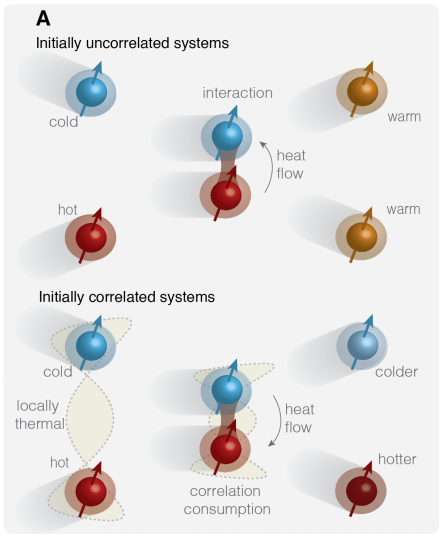Physicists Demonstrate How to Reverse of the Arrow of Time
One of the more curious challenges in physics is to understand the nature of time. At the microscopic level, the laws of physics are symmetric with respect to time—they work just as well whether time runs forwards or backwards. But at the macroscopic level, processes all have a preferred direction. The great physicist Arthur Eddington called this the “arrow of time.”
Just why this arrow points in one direction but not the other is one of the great scientific puzzles. The standard answer is that the arrow of time follows from the Second Law of Thermodynamics—that disorder, or entropy, always increases in a closed system.
That’s why milk mixes easily in tea but never emerges from a brew, why scrambled eggs never spontaneously unscramble, and why your morning mug of coffee heats your hands as you hold it and not the other way around.

But there is another factor at work—the universe’s initial conditions. For reasons unknown, the early universe was hot and its energy distributed evenly. This is a low-entropy state for a system that is dominated by gravity.
Over time, the entropy has continually increased, and this is what has largely determined the arrow of time.
But that raises an interesting possibility. If the initial conditions determine the arrow of time, perhaps it is possible to create systems on Earth with initial conditions that force the arrow of time to run in the opposite direction. In these systems, eggs could spontaneously unscramble and heat could flow from cold objects to hot ones.
Today, Kaonan Micadei at the Federal University of ABC in Brazil and a few pals have built such a system for the first time. In their experiment, the arrow of time runs in reverse, allowing them to observe a cold object heating up a hotter one. The work raises the possibility of a new generation of devices in which the arrow of time runs backwards.
The exotic new system is a mixture of chloroform dissolved in nail polish remover, or acetone. Chloroform—CHCl3—consists of a single carbon atom, a single hydrogen atom, and three chlorine atoms.
This creates a perfect playground for quantum physicists, who are able to manipulate the nuclear spins of single carbon and hydrogen nuclei using a technique called nuclear magnetic resonance.
The idea is to align the nuclei using a strong magnetic field. Physicists then use radio pulses to flip one or both spins, causing them to become correlated or entangled. And by listening to the radio signals emitted by the nuclei, the physicists can work out how the quantum states of the nuclei evolve.
At the same time, the carbon and hydrogen nuclei are in thermal contact, meaning that heat energy can flow from one to the other. The team can control the temperature of both nuclei by selectively heating them using nuclear magnetic resonance. When one nucleus is hotter than the other, heat naturally flows from the hot one to the colder one.
In the new experiment, Micadei and co have observed the opposite. And the key is to entangle the nuclei in advance. Entanglement is the strange quantum process in which two quantum particles share the same existence. It is this phenomenon that Micadei and co have exploited to create the unique set of initial conditions that allow time to run backwards.
When the nuclei are entangled, the correlation places extra limits on the way the particles behave, resulting in a kind of engine that drives heat energy in the opposite direction. “We observe a spontaneous heat flow from the cold to the hot system,” say the team.
That has important implications for our understanding of time and its relationship to entanglement and entropy. “Our results on the thermodynamic arrow of time might also have stimulating consequences on the cosmological arrow of time,” say Micadei and co, hinting that similar correlations may be responsible for the universe’s initial conditions.
A significant point in this work is that the phenomenon is not limited to microscopic systems. Indeed, these NMR experiments work on a macro scale in which huge numbers of molecules contribute to the observed signal. So the result may also allow a new generation of devices that drive heat from cold regions to hot ones.
Interesting work on the fundamentals of time.
Ref: arxiv.org/abs/1711.03323 : Reversing The Thermodynamic Arrow of Time Using Quantum Correlations
Deep Dive
Computing
Inside the hunt for new physics at the world’s largest particle collider
The Large Hadron Collider hasn’t seen any new particles since the discovery of the Higgs boson in 2012. Here’s what researchers are trying to do about it.
How ASML took over the chipmaking chessboard
MIT Technology Review sat down with outgoing CTO Martin van den Brink to talk about the company’s rise to dominance and the life and death of Moore’s Law.
How Wi-Fi sensing became usable tech
After a decade of obscurity, the technology is being used to track people’s movements.
Algorithms are everywhere
Three new books warn against turning into the person the algorithm thinks you are.
Stay connected
Get the latest updates from
MIT Technology Review
Discover special offers, top stories, upcoming events, and more.